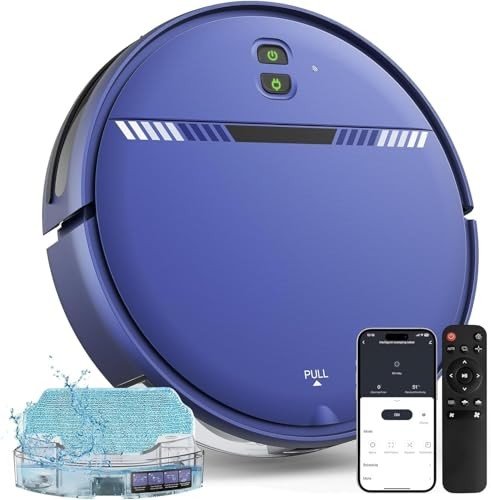The Evolution Of Cleaning Robots
Revolutionizing Home Maintenance: The Rise of Cleaning Robots
In an age where technology continues to affect everyday life, cleaning robots have become a considerable development in the field of domestic cleaning. These autonomously functioning makers have actually redefined how households handle cleaning jobs, providing benefit and performance. With their ability to navigate areas, avoid challenges, and run on pre-set schedules, cleaning robots are becoming necessary tools for homeowners wanting to optimize both their time and their living environment.
The Evolution of Cleaning Robots
Cleaning robots have actually gone through a significant change because their inception. What began as rudimentary devices has actually advanced into sophisticated devices geared up with innovative features. Below is a table highlighting some crucial milestones in the development of cleaning robots.
Year
Milestone
Description
1996
First Commercial Robot
The very first robotic vacuum, Electrolux's Trilobite, was presented.
2002
Roomba Launch
iRobot released the Roomba, making robotic vacuum popular.
2004
Mapping Technology Introduced
iRobot presented smarter navigation abilities, enabling for better cleaning courses.
2012
Smartphone Integration
The intro of mobile app control enabled users to manage robots from another location.
2020
Advanced Sensors & & AI
Robots started utilizing AI for enhanced mapping and object acknowledgment.
Kinds Of Cleaning Robots
As technology has advanced, numerous types of cleaning robots have surfaced, each developed to deal with various cleaning requirements. A few of these include:
Robotic Vacuums
- Designed to autonomously vacuum floorings, they typically include sensors to navigate around rooms and return to their charging stations.
Robotic Mops
- These robots are equipped with mopping performance, using water or cleaning solutions to scrub floorings.
Window Cleaning Robots
- Particularly engineered for window cleaning, these gadgets can climb vertical surfaces utilizing suction or magnetic systems.
Swimming Pool Cleaning Robots
- Developed for in-ground pools, these robots gather debris and even scrub the walls of the swimming pool efficiently.
Multi-tasking Robots
- Some contemporary cleaning robots combine vacuuming and mopping capabilities, providing flexible cleaning options.
How Cleaning Robots Work
The core performance of cleaning robots is focused around their capability to browse homes autonomously while performing cleaning jobs. Here's a breakdown of the fundamental elements that allow them to carry out effectively:
Sensors: Most cleaning robots are geared up with sensing units that help them detect obstacles, slopes, and edges, preventing falls and collisions.
Navigation Technology: Many robots use a combination of gyroscopes, accelerometers, and sometimes video cameras or LIDAR for navigation. This enables them to map their environment and clean effectively without missing out on areas.
Power Sources: Most cleaning robots operate on rechargeable batteries, with lots of capable of going back to their charging docks when their power runs low.
Cleaning Mechanisms: Whether through suction for vacuuming or turning brushes for mopping, cleaning robots feature various mechanisms tailored for effective dirt removal.
Benefits of Cleaning Robots
The incorporation of cleaning robots in homes presents several advantages:
Time-Saving: Cleaning robots can run on their own, permitting house owners to participate in other activities.
Consistent Cleaning: With arranged cleaning times, these robots make sure consistent upkeep of the home.
Hard-to-Reach Areas: Cleaning robots can access narrow spaces and corners that standard cleaning tools might deal with.
Decreased Allergens: Regular cleaning assists minimize dust and allergens, contributing to a healthier living environment.
Limitations of Cleaning Robots
Despite their many benefits, cleaning robots also present particular constraints that users must think about:
High Initial Cost: While the price of cleaning robots has reduced over time, some innovative designs can be fairly expensive.
Inconsistent Performance: Not all robots perform equally; some might have problem with specific surface areas or dirt types, leading to unacceptable outcomes.
Restricted Capacity: Many robotic vacuums have smaller sized dustbin capacities, requiring more regular emptying than standard vacuum.
Frequently Asked Questions about Cleaning Robots
Q: Are cleaning robots worth the investment?A: Cleaning robots can be
a worthwhile financial investment for those looking for time-saving services. They can substantially alleviate the cleaning problem, specifically for busy households. Q: Can cleaning robots be programmed?A: Yes, numerous cleaning robots feature programmable schedules and modes, enabling users to set particular cleaning times and areas. Q: How do I maintain my cleaning robot?A: Regular upkeep includes cleaning the brushes, emptying the dustbin, and occasionally looking for software updates. Q: Are cleaning robots efficient on all surfaces?A: Most robotic vacuums are reliable on hard floors and low-pile carpets. However, efficiency may
differ on thick carpets or particular types of carpets. Q: Do cleaning robots work well under furniture?A: Cleaning robots are created to fit under many furniture; however, the efficiency can depend upon the height of the furnishings.
**Cleaning robots represent a development in the world of
domestic chores, offering a blend of technology, convenience, and efficiency. While they are not a complete replacement for conventional
cleaning approaches, they substantially boost housekeeping abilities. As advancements continue, future models of these gadgets are anticipated to end up being even more intelligent, efficient, and user-friendly, further incorporating into the smart homes of tomorrow. best robot floor cleaner -day house owner therefore deals with an amazing future where cleaning robots might take much of the drudgery out of home upkeep, permitting a cleaner living area with minimal effort.  **
**